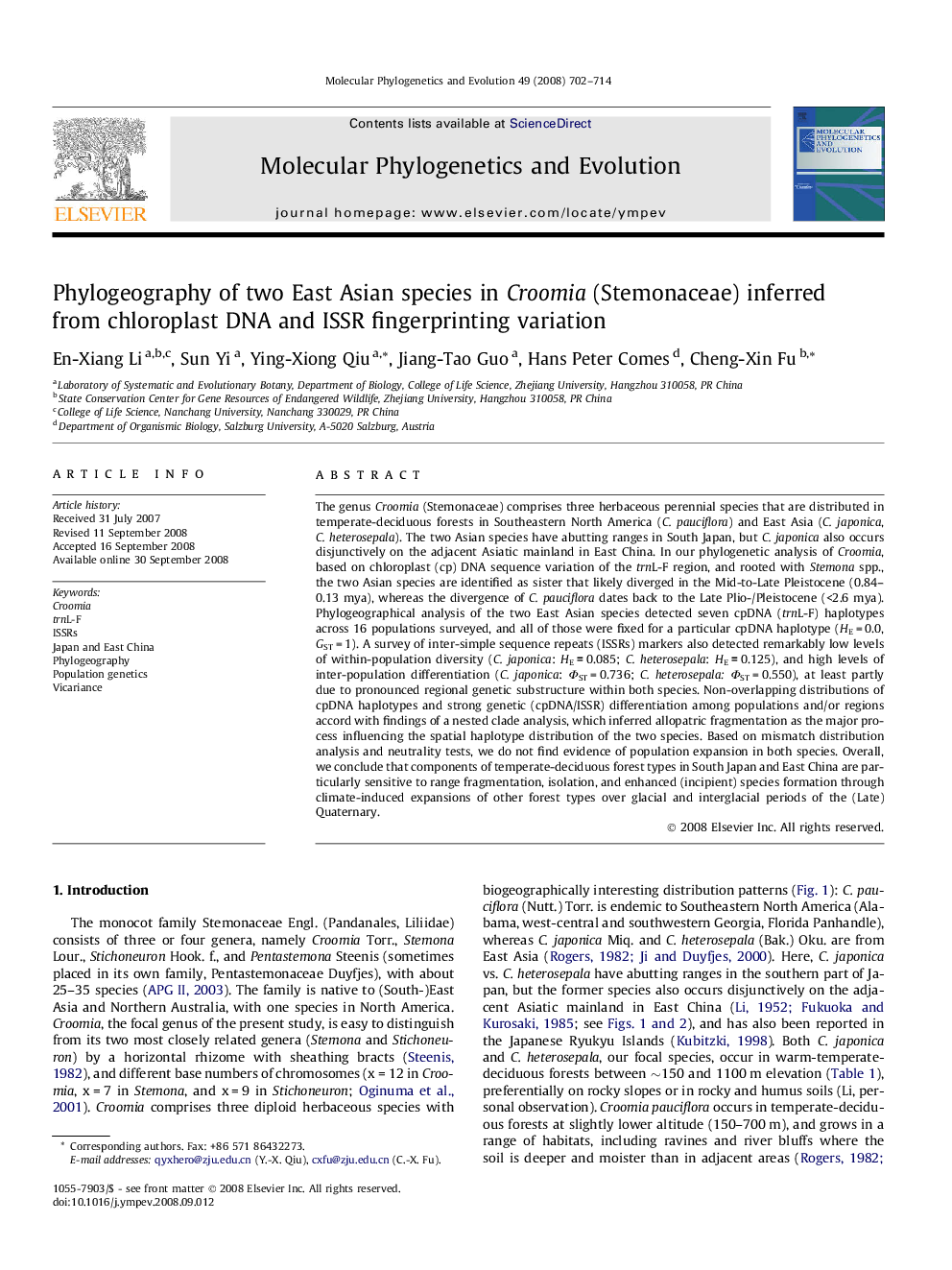| کد مقاله | کد نشریه | سال انتشار | مقاله انگلیسی | نسخه تمام متن |
|---|---|---|---|---|
| 2834989 | 1164330 | 2008 | 13 صفحه PDF | دانلود رایگان |

The genus Croomia (Stemonaceae) comprises three herbaceous perennial species that are distributed in temperate-deciduous forests in Southeastern North America (C.pauciflora) and East Asia (C. japonica, C. heterosepala). The two Asian species have abutting ranges in South Japan, but C. japonica also occurs disjunctively on the adjacent Asiatic mainland in East China. In our phylogenetic analysis of Croomia, based on chloroplast (cp) DNA sequence variation of the trnL-F region, and rooted with Stemona spp., the two Asian species are identified as sister that likely diverged in the Mid-to-Late Pleistocene (0.84–0.13 mya), whereas the divergence of C. pauciflora dates back to the Late Plio-/Pleistocene (<2.6 mya). Phylogeographical analysis of the two East Asian species detected seven cpDNA (trnL-F) haplotypes across 16 populations surveyed, and all of those were fixed for a particular cpDNA haplotype (HE = 0.0, GST = 1). A survey of inter-simple sequence repeats (ISSRs) markers also detected remarkably low levels of within-population diversity (C. japonica: HE = 0.085; C. heterosepala: HE = 0.125), and high levels of inter-population differentiation (C. japonica: ΦST = 0.736; C. heterosepala: ΦST = 0.550), at least partly due to pronounced regional genetic substructure within both species. Non-overlapping distributions of cpDNA haplotypes and strong genetic (cpDNA/ISSR) differentiation among populations and/or regions accord with findings of a nested clade analysis, which inferred allopatric fragmentation as the major process influencing the spatial haplotype distribution of the two species. Based on mismatch distribution analysis and neutrality tests, we do not find evidence of population expansion in both species. Overall, we conclude that components of temperate-deciduous forest types in South Japan and East China are particularly sensitive to range fragmentation, isolation, and enhanced (incipient) species formation through climate-induced expansions of other forest types over glacial and interglacial periods of the (Late) Quaternary.
Journal: Molecular Phylogenetics and Evolution - Volume 49, Issue 3, December 2008, Pages 702–714